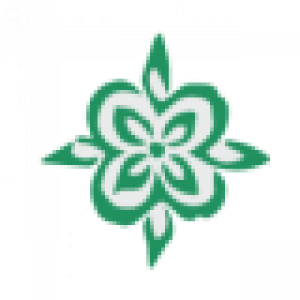Maintenance

January
- Winterize your gas mower.
February
- Sharpen your blades.
- Mow once.
March
- Mow as needed.
April
- Mow at least twice, preferably three times.
May
- Mow weekly rain or shine.
June
- Continue with weekly mowing.
- Re-sharpen blades.
July
- Continue with weekly mowing.
August
- Nothing to do.
September
- Mow as needed depending on weather and growth.
October
- Mow as needed depending on weather and growth.
November
- Mow once if needed.
December
- Mow once if needed.
- Winterize your gas mower.
TOOLS
Gas Mower: Convenient to use but emits the same amount of pollution per use as driving 100 miles.
Electric Mower: Cord is most powerful but you will need to watch the cord location. Cordless rechargeable mowers are particularly good for smaller yards.
Push Mower: Keep blades sharp and mow more frequently for best results.
TIPS
- Particularly with gas mowers winterize your mower for storage.
- Do not mow grass too low.
- Reduce grass area and reduce the need for mowing.
Related Video

Related Article


January
- Prune shade trees and ornamental trees that do not bloom in the spring (so don’t prune Mountain Laurels and Redbuds until after they bloom).
- Prune palms.
February
- Prune perennials at end of the month to three inches above the ground.
- Prune roses back 1/3 from tip to a bud and all dead, diseased and dying stems.
- Stop pruning oaks.
March
- Prune any remaining perennials to as low as three inches above the ground.
- Prune shrubs to shape or get rid of dead wood.
April
- Pinch back herbs to keep compact and from blooming to extend growth and eat.
May
- Prune ornamental trees that bloomed in the spring, e.g., Redbud, Mexican Plum, Mexican Buckeye.
June
- Remove dead flowers (called “deadheading”).
July
- Prune perennials back ¼ from tip.
- Remove dead flowers.
- Begin pruning oaks.
August
- Remove dead flowers.
September
- Nothing to do.
October
- Stop pruning oaks.
November
- Nothing to do.
December
- Prune shade trees, ornamental trees that do not bloom in the spring, and palms.
TOOLS
Pruning Saw: If you are using a saw, the preferred saw is a professional curved blade with tri-edged “razor” teeth and a pistol grip. These are designed to cut quickly and cleanly. Bow saws and carpenter saws are never recommended.
Chainsaw: If you are using a chainsaw, follow ALL of the safety precautions provided by the dealer. Don’t try to use on a ladder. Don’t use an old chain. Always spend a little money and get a sharp one on a regular basis.
Bypass pruners work like scissors where two blades pass by each other. These pruners are more precise. Use them when making specific cuts that can affect the health of the plant.
Anvil pruners work similarly to a knife where a blade is pushed through the plant material onto a cutting board. Use this when you are thinning bushes.
Both bypass and anvil pruners are available as a hand tool for close-in work or with longer handles. Long handheld pruners are often referred to as loppers.
Clean pruning tools after use with a mixture of 5% bleach and oil to prevent any potential transfer of disease.
Related Video

Related Article

January
- No additional mulch needed.
February
- No additional mulch needed.
March
- No additional mulch needed.
April
- No additional mulch needed.
May
- Apply compost and organic mulch beneath the canopies of trees and throughout beds.
June
- No additional mulch needed.
May
- No additional mulch needed.
July
- No additional mulch needed.
August
- No additional mulch needed.
September
- Apply compost and mulch beneath the canopies of trees and throughout beds.
October
- No additional mulch needed. Start saving your leaves for natural, free mulch.
November
- Apply compost and mulch (bark or your own leaves) beneath the canopies of trees and throughout beds.
December
- No additional mulch needed.
TOOLS
Fan Rake: A light weight rake with tines that are fanned out. Good for raking leaves from lawns into beds and compost piles, and for spreading mulch.
Mulching Mower: Double cuts grass and leaves, allowing the pieces to filter into the grass and provide a natural, free fertilizer.
TIPS
Don’t Bag It. Rake leaves into beds, use a mulching mower to help fertilize the lawn naturally and put the rest in your compost pile.
Related Video

Related Article


January
- Do nothing.
February
- Aerate and apply compost which is a great alternative to chemical-based fertilizers.
March
- Let the grass clippings naturally fertilize your lawn.
April
- Do nothing.
May
- Apply chelated iron products for iron chlorosis in lawns and shrubs that need it. If you do need this supplemental product, it may mean you have the wrong plant in the wrong place. Many east coast and deep south favorites like azaleas and hydrangeas will not do well here as they need the acidic soils found in the east.
June
- Do nothing.
July
- Do nothing.
August
- Do nothing.
September
- Plan on using leaves for mulch in your beds.
October
- We do not recommend chemical-based fertilizers but if you insist, at least take the time to do it right. For lawns during the latter parts of the month – one (1) lb. of Nitrogen per 1000 square feet of lawn. Do not apply before a rain as it may run off into streams and pollute them.
November
- If it has been determined your tree needs additional fertilizer, apply one (1) lb. of Nitrogen per 1000 square feet of tree root area (area beneath canopy X 2). Avoid doing this around rainy times.
December
- Do nothing.
TOOLS
Mulching Mower: Double cuts grass and leaves, allowing the pieces to filter into the grass and provide a natural, free fertilizer.
Fan Rake: A lightweight rake with tines that are fanned out. Good for raking leaves from lawns into beds and compost piles.
TIPS
Do not listen to the ads – in South Texas combined “Weed and Feed” products do not work! We weed and feed at different times of the year down here.
Related Video

Related Article


January
- If no significant rainfall, once a month for everything
February
- If no significant rainfall, once a month for everything
March
- If no significant rainfall, lawns are watered
- If no significant rainfall, shrubs are watered twice
- If no significant rainfall, trees are watered once
April
- Lawns are watered twice a month
May
- If no significant rainfall, lawns are watered as needed
June
- If no significant rainfall, lawns are watered no more than weekly
- If no significant rainfall, young shrubs are watered twice
- If no significant rainfall, young trees are watered once
July
- If no significant rainfall, water lawns no more than weekly
- If no significant rainfall, young shrubs are watered twice
- If no significant rainfall, young trees are watered once
August
- If no significant rainfall, lawns are watered weekly
- If no significant rainfall, young shrubs are watered twice
- If no significant rainfall, young trees are watered once
September
- If no significant rainfall, lawns are watered weekly
- If no significant rainfall, young shrubs are watered twice
- If no significant rainfall, young trees are watered once
October
- If no significant rainfall, water lawns no more than twice
- If no significant rainfall, water shrubs no more than twice
- If no significant rainfall, young trees are watered once
November
- If no significant rainfall, once a month for everything
December
- No water needed.
TOOLS
Watering Wands: These are attached to the end of a hose and release the water in a softer rain-like pattern. great for watering delicate plants and a favorite of the Garden Geek.
Hose-End Timer: If you use a sprinkler you attach to the end of the hose congratulations you are using way less water with little difference in landscape quality as your automatic irrigation system owning friends. Still, people can be forgetful. Place an inexpensive hose-end timer that will automatically turn off the sprinkler.
TIPS
- If you have the right plant in the right place watering requirements will be significantly reduced.
- If you are having a problem with your plant- like it’s not blooming as expected, don’t assume it needs more water, it likely needs more sun.
- Pay attention to the clues your plants are giving you regarding their watering needs. Large leafed plants may be wilted in the late afternoon but pop back in the evening – If they are still wilted time for a drink.
Related Video

Related Article




